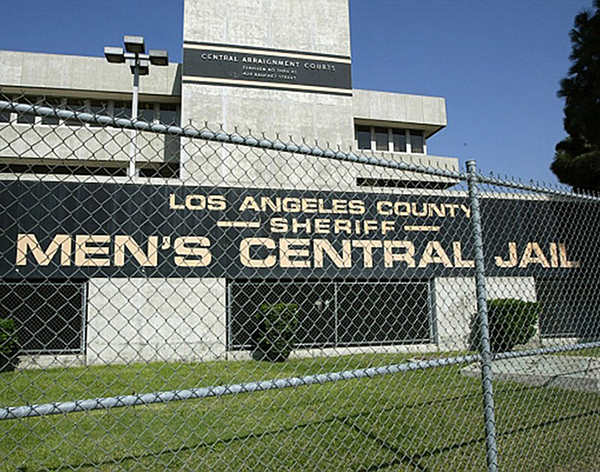Wave Wire Services
LOS ANGELES — A proposal to declare a humanitarian crisis in Los Angeles County’s overcrowded jail system and begin efforts to dramatically pare down the inmate population was pulled from the Board of Supervisors agenda April 4 amid opposition from some board members and law enforcement groups.
The motion to “depopulate and decarcerate” the jails — introduced by Supervisors Hilda Solis and Lindsey Horvath — was met with backlash from law enforcement organizations when it was published late last week. Among those opposing the plan was the Los Angeles County Association of Deputy District Attorneys, which called the proposal “dangerous and reckless.”
The Los Angeles County Police Chiefs Association, meanwhile, wrote in a letter to the board that the measure would “further erode community safety and quality of life.” The association also said it received no advance notice of the motion, learning about it only March 31, and called for more collaboration before the proposal advances.
Board of Supervisors Chair Janice Hahn issued a statement April 3 saying she planned to oppose the motion, saying that while she agrees with the need to address jail overcrowding, “any plan to reduce the population of our jails needs to be decided in partnership with law enforcement, our deputy district attorneys and our courts.”
Supervisor Kathryn Barger told the Daily News earlier that she also planned to oppose the motion.
In a statement, Solis said that since the motion was published, her office “has received concerns from a variety of stakeholders — those who feel the motion is not doing enough and those who feel it is doing too much. To that end, I will be referring the motion back to my office so that I can continue to gather input from all stakeholders. We must help balance the needs of public safety while also getting into compliance with our federal obligations. And in that process, I ask that county departments and agencies help us with meeting the need of our most vulnerable.”
The now-delayed motion is another step in a long-running effort by the Board of Supervisors to implement a “care first, jails last” agenda, which includes a long-fought effort to close the much-criticized Men’s Central Jail without constructing a replacement facility.
Proposals to close the jail have envisioned a redistribution of the inmate population across other correctional facilities over time, while also releasing thousands of inmates to residential programs or community treatment.
The Solis-Horvath motion called for a litany of efforts aimed at reducing the jail population and redistributing inmates, including through the release of some people in jail for select felonies or misdemeanors “who can be safely released back into the community.”
Solis said the motion primarily called for:
• Giving the sheriff authority to use electronic monitoring as a form of an alternative to incarceration.
• Advocating for the Los Angeles Superior Court to reimplement a zero-bail system that was used during the COVID-19 emergency, setting “bail at $0 for our pre-trial population, which accounts for almost half of the total jail population. She noted that “many who have not yet been tried for misdemeanors and lower-level felonies are languishing in county jails.”
• Requesting the state Department of Corrections and Rehabilitation to take individuals in county jails who have been sentenced to prison to their facilities, accounting for about 10% of the jail population.
• And advocating for legislative changes at the state level so those who are medically fragile can be eligible for compassionate release.
Solis said she was introducing the motion as “a way to strike a balance with both justice-involved advocates and public safety representatives. Additionally, with the federal consent decrees and settlement agreements, including a potential receivership from the state, I felt this move was necessary.”
Eric Siddall, vice president of the Los Angeles Association of Deputy District Attorneys, said in a statement that the motion would “gut parts of the criminal justice system without input from stakeholders.” He said it would implement what he called a “cite and release” system “without any plan or infrastructure to protect the community from violent criminals apprehended by law enforcement.”
“Further, it creates no lockdown facilities for the mentally ill,” he said. “This program benefits no one except career criminals.”
The county Police Chiefs Association, in its letter to the board, said similar efforts to reduce the populations of state prisons have led to “a steady rise in crime, reduced quality of life and increased fear within our communities.”
“Closing [Men’s Central Jail] will have a very similar effect on communities if the county does what the state did by releasing large numbers of inmates arbitrarily and without community protections in place,” the group said in its letter. “We are simply asking for more detailed vetting and building of replacement alternatives, and for a seat at the table.”









